- Bernard Preston homepage
- Compost
- Compact Compost Tumbler
Compact compost tumbler
A compact compost tumbler is a neat way to make humus in a small garden.
Well-matured compost looks just like rich, dark earth. If it still has got a few small sticks and bits, do not be anxious. The nutrients are there and that is what you need for organic gardening.
Adding a handful of worms will speed up the process.
This page was updated on 6th May, 2025.
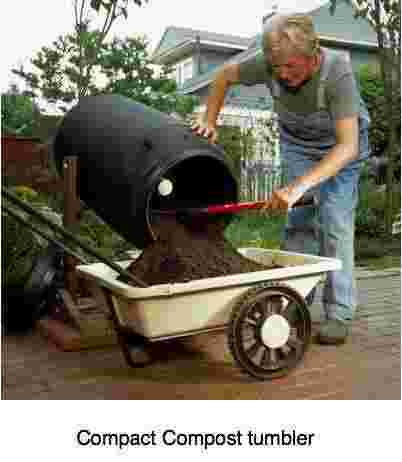
Nitrogen fixation bacteria
Nitrogen fixation bacteria are vital to the health of the planet; some of the element comes from lightning but most is produced by the bugs in your compost pile and rhizobia bacteria along the roots of legumes.
Good humus depends on oxygenation. That is where the compact compost tumbler comes into its own; it provides instant, plentiful air. It's good exercise for your arm too; beats going to the gym, right? And you will find that you will be spending less time with the shrink and the man who shakes up your bones. Gardening is one good way in which you can do your level best to put your psychologist and DC out of business. It is today being called forest bathing.
But first here is a suggestion; gardening is good exercise but it is also hard work. Before venturing down to where you will use the mature contents of the compact compost tumbler to grow your cabbages and kale, take two minutes to do our simple lower-back workout. For more information, scroll down.
Aerobic-composting, fully oxygenated, is faster and cleaner; it has no smell, and is more environmentally friendly. The tumbler supplies sufficient air for your own rapidly produced humus. It's a neat gadget.
The downside is that it is expensive and will provide only very limited amounts of compost.
But if you have limited space and capacity, the compact compost tumbler is fine. There are quite a lot of different makes on the market; just expensive.
Do your homework first, and check out as many different ones as possible; some are trash.
Fill it with all your kitchen-waste, potato peels and watermelon skins; raw stuff only. Egg shells are fine but again not if they have been hard-boiled. Absolutely nothing cooked in your compost containers because the bugs will not readily decompose it; it may smell and will attract vermin.
The cooked material from your kitchen can go into your worm farm; they do not take up much room but there may be some smell from the liquid compost that is produced. So empty the juice frequently onto your peas, beans and lettuces.
Add any earthworms you find in the garden; and any small sticks or rotting logs that are obviously covered in algae or fungi. It simply speeds up the process if you can seed your compact compost tumbler with some of the myriad of bugs involved in the decomposition of organic material.
A small can of chicken-litter or cow manure would help too.
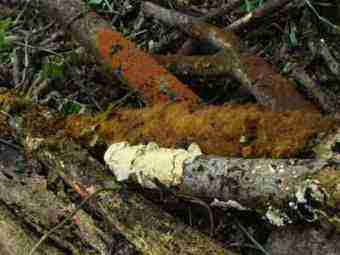
There are plenty of compact compost tumblers on the market and they all do the job; pick the one you like the look of; avoid any that are cheap and obviously nasty. Don't buy any made of wood; they will just rot.
Don't compact the material down and do not saturate it with water; a little damp, yes, but not sodden. As the bacteria attack the contents of your compact compost tumbler it will naturally settle and you can can add more material from your kitchen containers.
Actually it's not a bad idea to have two. Periodically you can tip the contents of the first into the second. Remember, aerobic composting is what it is about; plenty of oxygen.
Anaerobic-composting with limited oxygen will produce sulphurous gases and stink.
For speedy decomposition of all that organic material you need compost bugs; or a handful of creepy-crawlies from a worm farm.
"There is increasing evidence that exposure to plants and green space and particularly to gardening, is beneficial to mental and physical health."
- Clinical Medicine (PMC6334070)[2]
Do you not love all those colours? They are so vibrant; whites, yellows and reds. Actually they are much more spectacular than my photo. Nature is just wonderful the way a fungus will attack untreated wood and render it into the finest compost.
Unless you are also a beekeeper you will love fungus in the garden. They attack our hive-parts too. Now we dip them into hot wax instead of painting them.
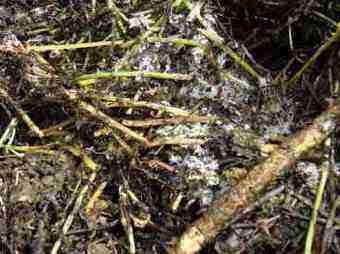
I ask is nature not wonderful?
What I really mean is the good Lord made them all, isn't He wonderful? When I am busy in the garden, it is a quiet time to commune with Him; wallow a bit in his love and enjoy the beauty of his creation.
I get some flack sometimes when I wax too strongly on the love of Almighty God for each and everyone of us. The way you Christians keep bringing religion into everything, even Xmas and gardening.
Well you see I believe in being a Christian without being
religious. God does not just live in cathedrals; it all started in a garden, right? The place we call Eden. I can find him in our patch sometimes more easily than in church. Is that a heresy?
Can't you see creation as you call it is just a series of random events, coupled with Darwinian evolution?
Well actually no I cannot. To believe that those fungi came about by chance is like believing that my watch was made by a flash of lightning, the right ingredients and hey presto, a master clock-piece.
My Seiko was created by a clever Swiss man. And those fungi? The Good Lord made them all. There is none so blind as they who will not see.
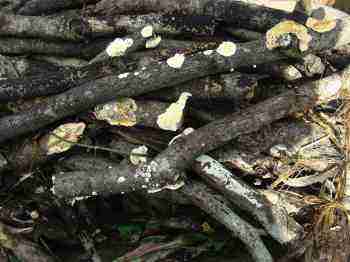
This is what larger material decomposes down to; fine dark humus in two to three years. Yes, sticks and old logs take a lot longer to decompose that grass cuttings, autumn leaves and kitchen-refuse; for them just a few months.
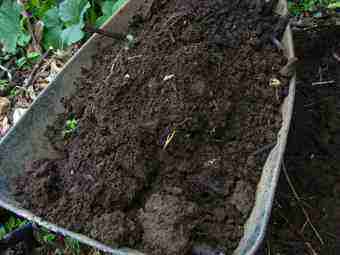
"Gardening is civil and social; but it wants the vigor and freedom of the forest and the outlaw."
Henry David Thoreau
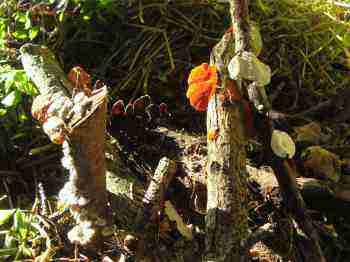
Are they not stunning? Like the children, they are black and yellow; brown and white too. The good Lord made them all.
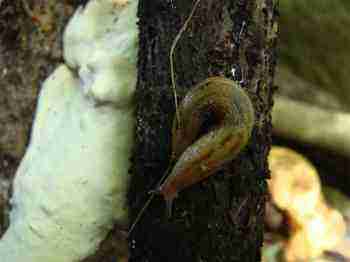
Compact compost tumbler
There is an alternative to the expensive compact compost tumbler for the larger garden.
Just as you can make compost from grass-cuttings and general waste from the garden and kitchen, so you can generate it from much larger sticks and logs.
Starting a compost pile only takes a day of hard labour; but considerably longer to produce fine, well-rotted humus from rotting logs than out of grass cuttings and kitchen waste.
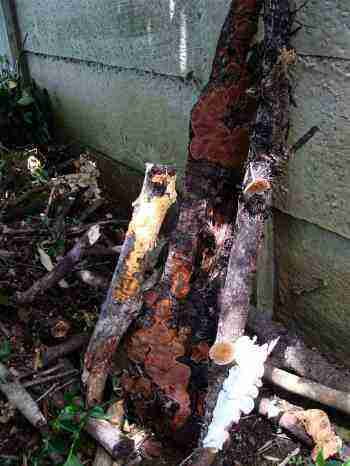
Kitchen waste incidentally we now keep for the worm farm; an infestation of rats has moved into the garden and depriving them of food is part of the solution. They love the contents of the pail of potato-peels, rotten peaches and so on.
This is only for those privileged to have a large garden, with a quiet corner where you can make a compost heap that you can leave for a year or two; longer if the logs are large.
Jungle
My apiary became seriously overgrown during our seven-year sojourn
in the Netherlands. See what I mean? When we left this was a
beautiful mown area with 25 hives; dangerous African bees, Apis
mellifera Scutellata, not to be messed with.
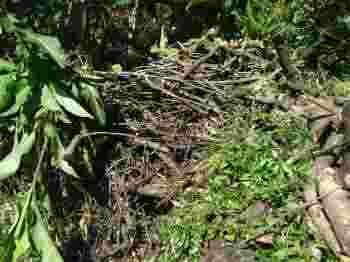
So before bringing in new colonies, this area had to be completely cleared. These sticks from a liquid amber that we had someone pollard two years ago, made the perfect beginnings for starting a compost pile. By the sweat of your brow find half-rotten sticks and logs and break them into shorter lengths. I have chosen about 30 to 50 cm long.
For those still using that archaic means of
measurement used by Noah in building his ark, about 2 to 3 feet. The
chainsaw is needed for the thicker logs. Every day before getting stuck in, I do some lower back exercises.
Cool, shady and damp
Choose a shady spot for your humus pile or compact compost tumbler. Mine is in the shade of a large mulberry tree.
Here is an aside. My granddaughter, aged nearly two, had last year a serious problem with constipation. It was nasty. A large fissure formed, and she had a lot of abdominal and rectal pain. That mulberry tree cured her. Some stuff from the doc helped in the short term, but we did not like what we read on the label; the side-effects of drugs, don't minimise them.
Over 200 000 Americans die every year from the side-effects of medication.
By chance really, granny discovered that a wander every morning round the mulberry bush was the cure. The wonder of nature, of our loving heavenly Father, the good Lord made them all. Soluble fibre in fruit is his gift to the constipated colon. Beets are magnificent too, prunes and plums. Most fruit and veg in fact is rich in the good stuff. She is cured.
Plenty of fibre incidentally from our food also is absolutely essential for the microbiome; it's unbelievable that in the happy tum there dwell 2kg of friendly bugs.
Work with nature, not against it is the subject of backyard permaculture; it applies when dealing with a grumbling stomach too. Compact compost tumblers are perfect for the small garden and can be closed to keep vermin out.
The wonder of worm farms
The wonder of worm farms means an unlimited supply of wrigglies to supplement the bacteria and fungi that break down the raw compost material; they simply speed up the process and simultaneously provide a magnificent liquid manure for your plants.
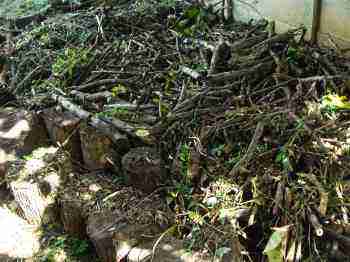
Those short lengths of half decomposed sticks are being used to make a compost pile. Around the edges I have placed larger logs, the more rotten the better.
Then by wheelbarrow and the sweat off my brow this area is slowly filling up. I will make it about a metre deep and then cover it with half dried and dead wandering Jew, a prolific weed in our garden; it needs both green and brown material.
Newsletter
Our newsletter is entitled "create a cyan zone" at your home, preserving both yourself and Mother Earth for future generations; and the family too, of course. We promise not to spam you with daily emails promoting various products. You may get an occasional nudge to buy one of my books.
Here are the back issues.
- Lifestyle and ideal body weight
- What are ultra-processed foods?
- Investing in long-term health
- Diseases from plastic exposure
- Intensive lifestyle management for obesity has limited value
- A world largely devoid of Parkinson's Disease
- The impact of friendly bacteria in the tum on the prevention of cancer
- There's a hole in the bucket
- Everyone is talking about weight loss drugs
- Pull the sweet tooth
- If you suffer from heartburn plant a susu
- Refined maize meal and stunting
- Should agriculture and industry get priority for water and electricity?
- Nature is calling
- Mill your own flour
- Bake your own sourdough bread
- Microplastics from our water
- Alternative types of water storage
- Wear your clothes out
- Comfort foods
- Create a bee-friendly environment
- Go to bed slightly hungry
- Keep bees
- Blue zone folk are religious
- Reduce plastic waste
- Family is important
- What can go in compost?
- Grow broad beans for longevity
- Harvest and store sunshine
- Blue zone exercise
- Harvest and store your rainwater
- Create a cyan zone at your home
That will keep the compost pile cool and damp. It may need to be sprayed with a hose occasionally in the dry months.
Below you can see the compost I have from some logs I left behind seven years ago.
Notice the general principle; dry, then green, another layer of dried out material again and finally a topping of more weeds or grass. Once this compost pile is about 4 foot deep, I'll close it for about four months, water when the weather is wintry, and perhaps take an occasional peep.
It's a great place to grow butternut while it is maturing.
I'm not expecting anything dramatic. Composting is a slow process of air, bugs and earthworms.
I will chuck any earthworms I catch in the garden into the pile. They just love rotting logs.
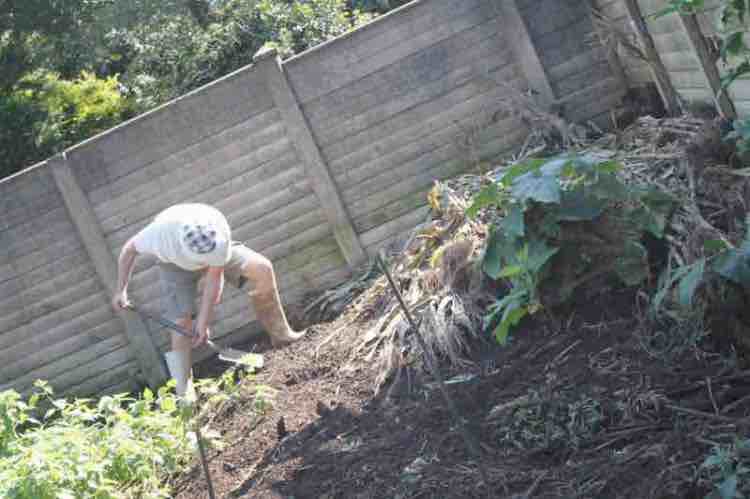
Build a compost pile; of sticks, corn stalks and whatever green material you can lay your hands on.
Obviously this compost pile is neither compact, nor does it tumble.
But it does achieve good aeration, same as the compact compost tumbler,because of the large gaps between the sticks.
I will make no attempt to compact this heap or tread it down; those gaps for transfer of air is vital for aerobic bugs. You can read more about the two types of decay at making a compost pile.
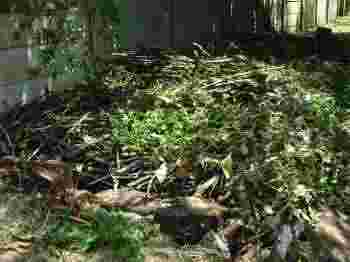
"What the object of senile avarice may be, I cannot conceive. For can there be anything more absurd than to seek more journey-money, the less there remains of the trip?"
Cicero (106-43 BC)
Cicero was I suspect talking about passing on our worldly treasures to the next generations ahead of time when they really need it; a college education doesn't come cheap.
But let's not forget our passions. My grandchildren walk in Eden with us regularly, planting seeds, picking butternut and digging potatoes; podding lima beans and collecting the eggs from the hens too. Already they are taking an interest in beekeeping; but not the stings. One day I hope to introduce them to motorbikes, gliders and the lathe. Let us pass on the things that amuse and drive us to our offspring.
Our children mostly refuse to take their ignorant parents seriously; luckily some things happen just by default. And then they themselves grow older, just as we did, and wonder how they could have been so wrong.
Growing butternut squash
Growing butternut squash is only for the large garden but how they flourish in humus; full of carotenes, those coloured substances that help prevent tumours. The compact compost tumbler soon proved too small for us.
And now it's three years later; this is what all those sticks have composted down to. Just perfect to be moved to the veggie patch. Or, you could just plant winter squash, also known as butternut, or peas right on this compost pile.
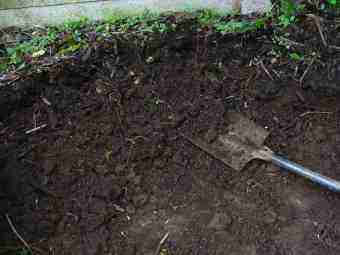
Here is is the butternut I have just photographed, planted deep in last year's compost pile. I have just measured it; six pounds and 28cm long. More important than the size is the deep orange colour it will have, rich in beta-carotene; believe you me, the taste and the nutrition are quite different to any commercial winter squash, as the Americans call it, that you can buy.
Growing butternut squash is really fun but you do need a big garden. Unless you have a fence like this to grow them on, they meander all over the patch.
Incidentally there is nothing the chooks like more than a butternut that's been stung. Chop it in half and leave it out for them before putting it in the compact compost tumbler.
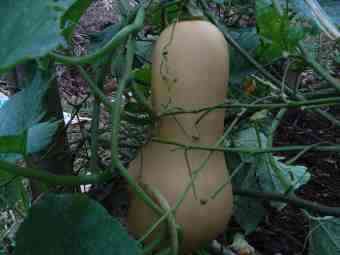
When browsing use right click and "Open Link in New Tab" or you may get a bad gateway signal.
Did you find this page interesting? How about forwarding it to a friendly book or food junkie? Better still, a social media tick would help.
- Bernard Preston homepage
- Compost
- Compact Compost Tumbler
Address:
56 Groenekloof Rd,
Hilton, KZN
South Africa
Website:
https://www.bernard-preston.com